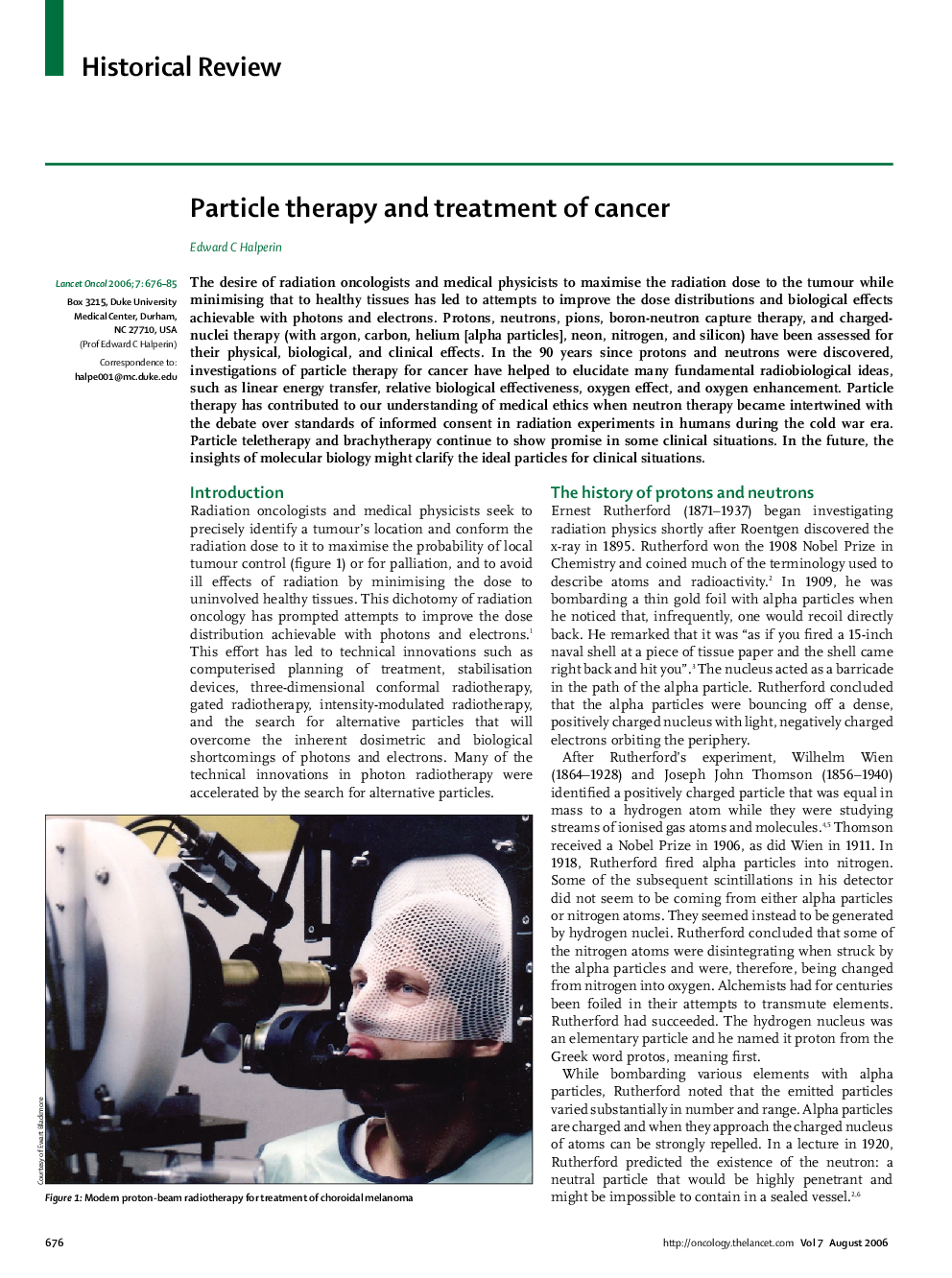| Article ID | Journal | Published Year | Pages | File Type |
|---|---|---|---|---|
| 3995684 | The Lancet Oncology | 2006 | 10 Pages |
SummaryThe desire of radiation oncologists and medical physicists to maximise the radiation dose to the tumour while minimising that to healthy tissues has led to attempts to improve the dose distributions and biological effects achievable with photons and electrons. Protons, neutrons, pions, boron-neutron capture therapy, and charged-nuclei therapy (with argon, carbon, helium [alpha particles], neon, nitrogen, and silicon) have been assessed for their physical, biological, and clinical effects. In the 90 years since protons and neutrons were discovered, investigations of particle therapy for cancer have helped to elucidate many fundamental radiobiological ideas, such as linear energy transfer, relative biological effectiveness, oxygen effect, and oxygen enhancement. Particle therapy has contributed to our understanding of medical ethics when neutron therapy became intertwined with the debate over standards of informed consent in radiation experiments in humans during the cold war era. Particle teletherapy and brachytherapy continue to show promise in some clinical situations. In the future, the insights of molecular biology might clarify the ideal particles for clinical situations.
